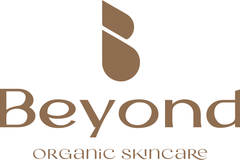Organic VS Non-Organic and why organic cosmetics will always be more expensive?
0 comentarios
You've just discovered an organic face cream that sounds like a dream come true. It does everything you need it to do and is free of unnecessary chemicals. But when you are ready to pay, you get a bad case of sticker shock.
What's up with the price?
There are several things you need to keep in mind before you decide if the price point of organic products is something you can live with.
Ingredients
Organic cosmetic products start with organic plants. The organic method of growing simply produces less. It is healthier for the soil and the quality of produce is higher, but it comes at the price of the volume.
The second step is processing. Organic brands tend to use ingredients processed in a way so they lose as little of nutrients as possible.
Take regular vs cold-pressed oil. If you wanted to make some cold-pressed almond oil, you would have to squeeze it out very slowly. But for the regular non-organic kind, you can apply chemicals or use heat - both that can kill quite a bit of that Vitamin E goodness.
Formula
The best organic skincare is usually rich in active ingredients.
Here's a little lesson in reading the label - all ingredients are listed in order by concentration, and for anything in the 6th place or below you can safely assume that there is 1% or less of that ingredient.
Look, this is not a terrible thing. If you are adding essential oil, exfoliants or retinol, 1% is more than just fine. But if you are buying a green tea serum and you realise there's only 0.5% of green tea extract in there? Yeah, maybe not worth the money.
Many organic brands give you more bang for your pound. For example, you can find some products that will use rose water or aloe vera for their solvent instead of plain water.
Another thing is the regular use of essential oils. They are highly concentrated and a small amount can enrich any product, but they take massive amounts of plants to make. It takes approximately three pounds of lavender flowers are required to produce just 15mL of lavender essential oil and almost quarter-million rose petals to distil 5mL of rose oil.
Production
If the organic cosmetics line is made by an independent brand, that can mean a lot more money that needs to be handed out. Big corporations producing non-organic products have networks of research facilities and separate production plants for ingredients, packaging, actual product, etc.
Also good to keep in mind, the more of the process is kept in the house, the more of the money can be saved.
And in many cases, it's not only about the quantity but also the quality. We talked about the difference of quality of ingredients, Some of those ingredients need to be handled with more care so they would not lose their potency. So, for example, if an ingredient is sensitive to heat, there will be upfront cost in the form of equipment for temperature management.
Packaging
Unfortunately, this will be an issue only for a minority of brands, but sustainable packaging can add up to the cost.
Paper and cardboard are cheap, but can't be used for every product. Glass and metal jars and bottles are reusable, but are pricey AND add to the transportation cost due to their weight. Bioplastics are not that much more expensive than regular plastic, but the fact that they are not widely used brings the price tag up.
So, if a brand is committing to use environmentally friendly packaging, or to recycle the regular stuff, they will pass at least some of that cost to you.
Distribution
Most brands that put out organic lines tend to be smaller businesses. That means they lack the infrastructure big corporations have and can't put their product on every shelf in every store.
It's the same story as with the production cost. The more of the things that need to happen outside of the house, the more it will all cost.
If a brand sells directly from their website/warehouse, you are paying for all the distribution cost through shipping and handling. Or petrol if you go and buy the items in person. But, if their stuff is sold to another store, they need to add the cost of getting the product to them to the overall price.
Of course, if you are buying the product from a third party, they also have their profit margin.
To sum up, the large non-organic companies produce products cheaper due to their process of cutting cost production and the end result is products that can be damaging with prolonged use. Organic products, on the other hand, can be more costly but you are getting environmentally friendly, sustainable farming ingredients with organic or natural products more in tune with your body.


0 comentarios